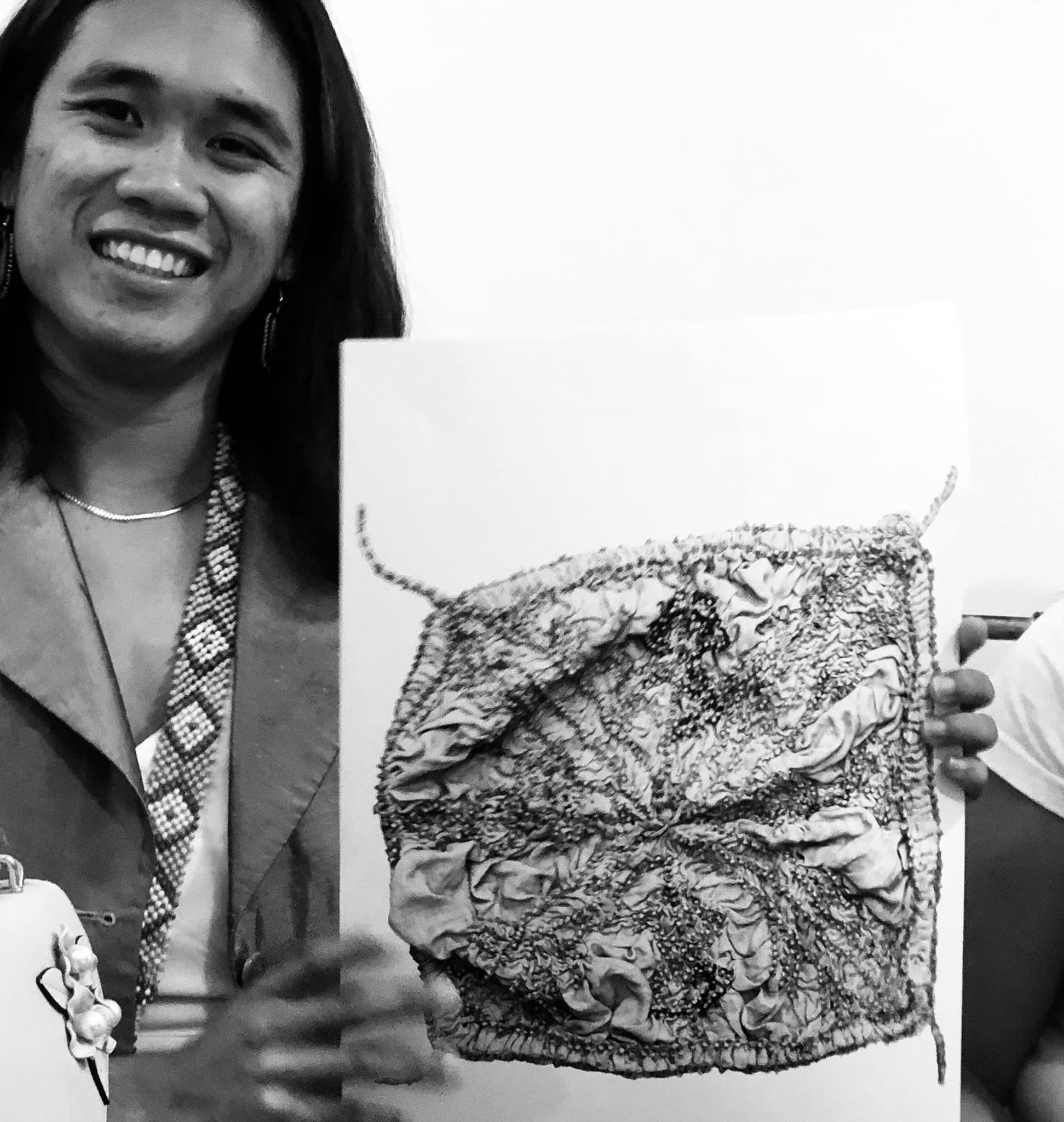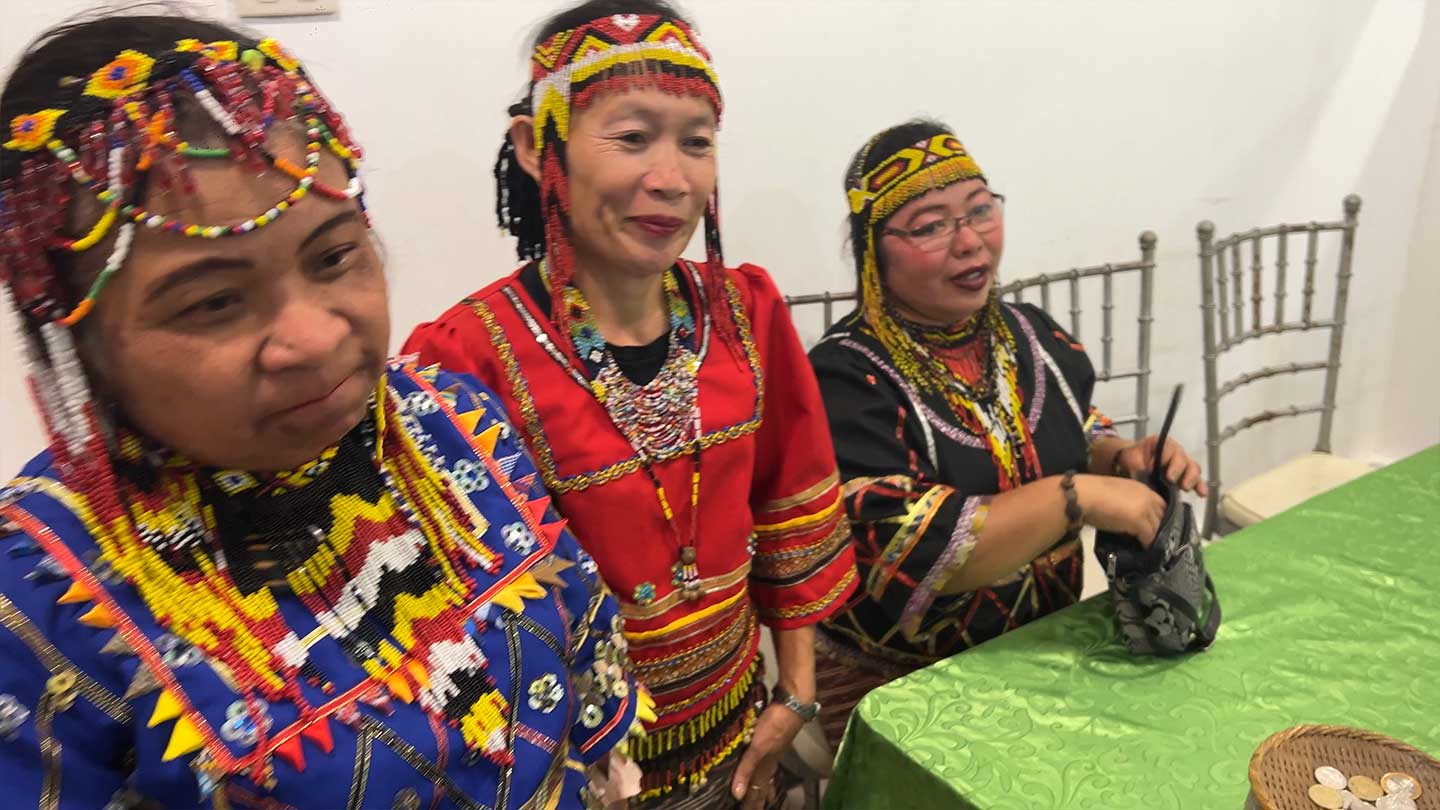Bagobo Tagabawa-Klata : Remaking Loss
by Marian Pastor Roces and Cristina Juan
Among the Tagabawa Bagobo of Digos, Davao del Sur—with whom Dr. Cristina Juan and I spent a day and a half discussing large photographs of Tagabawa cultural material that have been in American and European museums for longer than a century — we understood the depth of memory loss. We saw early on, that unlike the Blaan or the Tboli, the small group of Bagobo elders, artisans and IP representatives that had come to work with us in the workshop were not as quick to recognize Bagobo material culture from the early 20th century. There were lots of squabbles, uncertainties and contradictory statements as we went through the first batch of photos.
But one form and its importance were not forgotten. It is the deeply saturated red tangkulu pamudbud.

Worn exclusively by datu figures possessed of compelling character (and equivalent upper garments by female ritualists), this plangi dyed head cloth form was among the most culturally significant clothing pieces in all of Mindanao. It’s ritual power was understood even by other language groups.
The Tagabawa group with us punctuated the discussion when they said: It is sacred. It cannot be worn by anyone.
And then the outpouring: the offense they feel at the transformation of the tangkulu into a cheap fashion accessory. They remarked: it (the new version) was even worn by Vice Ganda! By Heart E! But they know they are voiceless even as they speak loudly. We asked if there was a way to talk about this affront in some kind of social media platform.
It was difficult to be hopeful on the first day - everyone had felt the sense of cultural loss.
By the second day of the workshop, there came a better sense of ways of going forward with this burden of absent memories. The trajectory was towards remaking. The presence of the new IPMR representative and the promises of support and access to new materials (glass beads, cotton) encouraged people to see the photos as challenges towards a more complex understanding of their cultural heritage and a commitment to an art form that had pasts. Evanne, one youth in the group ,was particularly drawn to a picture of a tangkulu-in-process. The still undyed but already intricately knotted kerchief is now more than a hundred years old. The young man expressed the wish to make one, guided by the museum picture.
_______
To read a detailed documentation of the process of digital repatriation - along with photos, annotated terms and a glossary produced from the workshop, read Celito Terando’s process report here.
Bagobo Tagabawa-Klata Community Knowledge Co-Creation Workshop
